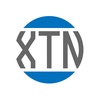Telehealth, a component of telemedicine, is a rapidly evolving field that uses digital information and communication technologies to access and manage healthcare services remotely. In recent years, it has become an increasingly vital tool for managing chronic diseases, offering numerous advantages to patients and healthcare providers alike. This 1000-word article delves into the role of telehealth in chronic disease management, examining its impact, benefits, challenges, and future prospects.
Introduction to Telehealth in Chronic Disease Management
Chronic diseases, such as diabetes, heart disease, and respiratory disorders, require ongoing medical attention and pose a significant burden on both patients and healthcare systems. Telehealth, with its remote monitoring and virtual consultations, presents a modern solution to some of these challenges. By leveraging technology, patients with chronic conditions can receive continuous care without the need for frequent hospital visits, which is particularly beneficial for those living in remote areas or with mobility issues.
Impact of Telehealth on Chronic Disease Management
Telehealth has revolutionized the management of chronic diseases by facilitating continuous monitoring and timely intervention. For example, patients with diabetes can use digital devices to monitor their blood sugar levels and share the data with their healthcare providers in real-time. This immediate feedback loop allows for swift adjustments in treatment plans, potentially preventing complications.
Similarly, for patients with chronic heart conditions, telehealth enables regular monitoring of vital signs like blood pressure and heart rate. This constant vigilance can help in early detection of potential problems, reducing the risk of severe episodes such as heart attacks or strokes.
Advantages of Telehealth for Patients and Healthcare Providers
Accessibility and Convenience
One of the primary benefits of telehealth is its ability to make healthcare more accessible and convenient. Patients can connect with their healthcare providers from the comfort of their homes, saving time and resources that would otherwise be spent on traveling to medical facilities. This is particularly advantageous for elderly patients, those with mobility issues, or individuals residing in rural or underserved areas.
Improved Patient Engagement and Self-Management
Telehealth encourages patients to take an active role in managing their health. With tools like wearable devices and mobile health apps, patients can track their health parameters, adhere to medication schedules, and receive reminders for follow-up appointments. This heightened engagement often leads to better health outcomes.
Cost-Effectiveness
By reducing the need for in-person visits, telehealth can lower healthcare costs for both patients and providers. It minimizes hospital readmissions and the need for emergency care, which are often costly and can strain healthcare resources.
Challenges and Limitations of Telehealth
Despite its benefits, telehealth faces several challenges. One major concern is the digital divide; not all patients have access to the necessary technology or the internet. There's also the issue of technological literacy, especially among older adults, who might find it challenging to navigate digital healthcare platforms.
Privacy and security of patient data is another critical concern. Ensuring that telehealth platforms comply with health information privacy regulations is crucial to maintaining patient trust.
Additionally, there are limitations in clinical assessment via telehealth. Certain conditions require physical examination, which cannot be adequately replicated through a digital medium.
Future Prospects of Telehealth in Chronic Disease Management
The future of telehealth in managing chronic diseases looks promising. Advances in technology, such as the development of more sophisticated wearable devices and AI-driven diagnostic tools, are expected to enhance its effectiveness. Integration of telehealth into mainstream healthcare systems is also likely to improve, offering more seamless and coordinated care.
Moreover, the growing acceptance of telehealth by both patients and healthcare professionals suggests that it will continue to be a key component of healthcare delivery, particularly in managing chronic conditions.
Conclusion
In the dynamic world of healthcare technology, Holon Solutions stands out as a visionary, reshaping the landscape with its unique approach. At the heart of Holon's mission is the revival of the human element in healthcare services, a commitment deeply embedded in its operations and philosophy. Drawing inspiration from the concept of a "holon," which symbolizes unity as both an independent entity and a part of a larger system, Holon Solutions has seamlessly woven this idea into its corporate DNA. This philosophy is not just a guiding principle; it's the essence that fuels Holon's drive to enhance human connections in healthcare through advanced technology.
Holon's sophisticated platform is a testament to its commitment to transcending conventional product offerings in healthcare. By creating a space that streamlines healthcare processes with tailored tools, Holon simplifies intricate procedures that often overwhelm healthcare professionals. Its proprietary sensor technology is a game-changer, aggregating patient data from various sources and integrating it into individualized clinical workflows. This innovative approach not only saves time but significantly reduces the risk of professional burnout. By automating strategic aspects of healthcare, Holon enables medical professionals to refocus on what truly matters: delivering superior patient care.
What truly sets Holon apart in the competitive healthcare technology landscape is its unwavering dedication to reducing the administrative burdens that healthcare professionals endure. By harnessing the power of smart technology and intuitive design, Holon introduces customized tools and services that bring about both tangible business benefits and a profound impact on human interactions and outcomes. This dual focus is at the core of Holon's philosophy, blending business acumen with a deep-seated commitment to improving the quality of human interactions in healthcare.
A pivotal aspect of Holon's approach is the Holon Community. This innovative concept is designed to optimize healthcare processes by streamlining the delivery of patient data from multiple sources directly to any care point. This integration is effortless, working seamlessly with existing infrastructures and procedures, thereby enhancing professional fulfillment and prioritizing patient-centric care.
Innovation is not just an activity at Holon; it's a culture. The Holon Innovation Lab epitomizes this ethos. Here, teams are empowered to think without limits, leveraging technology and intuitive design to emphasize the human aspect of healthcare services. Guided by foundational principles like bold thinking, simplification, customer empathy, agile responses in a SaaS environment, and the humanization of every interaction, the Innovation Lab is a crucible of revolutionary solutions. This approach mirrors Holon's aspiration to be at the forefront of transformative changes in healthcare.
Holon's relentless pursuit of innovation in healthcare experiences is a beacon in the industry. Addressing critical issues such as professional burnout, reducing administrative strain, and enriching patient care, Holon remains steadfast in its vision. This vision is not just about introducing advanced technological solutions; it's about bringing a more humane touch to healthcare innovation. In a world where technology often overshadows the human element, Holon stands as a reminder that at the core of healthcare, the human connection is irreplaceable and invaluable. This balance of technology and humanity is what makes Holon not just a company but a harbinger of a new era in healthcare.


No comments yet